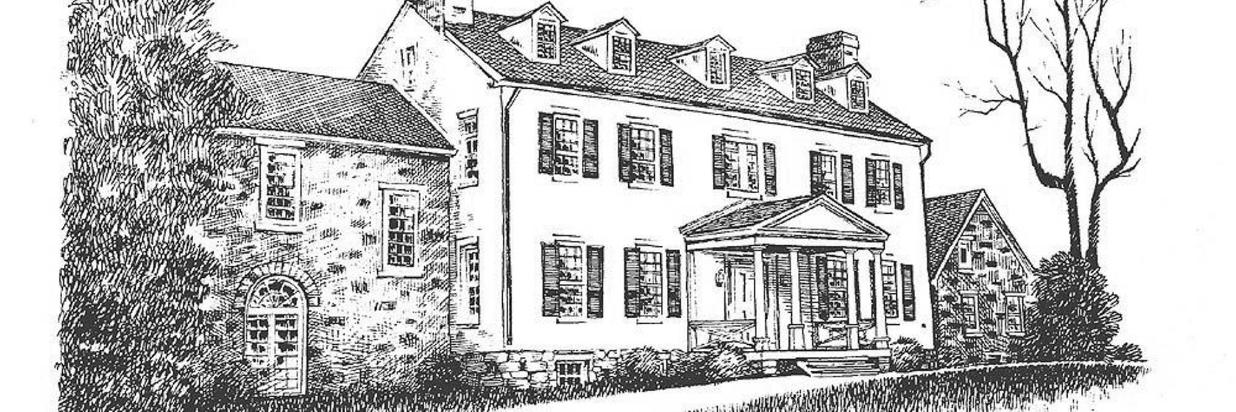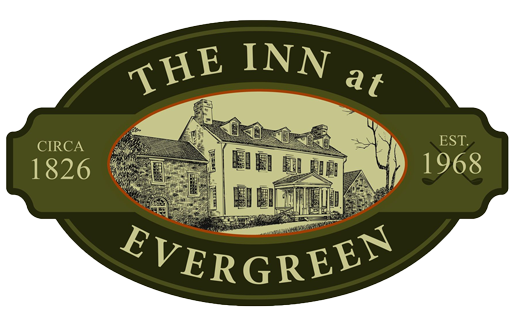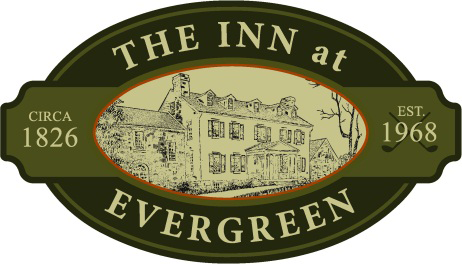
History of Inn at Evergreen
Brief History:
This circa 1826 Manor House reopened as the Inn at Evergreen on April 16, 2016. Originally a plantation of more than 1,000 acres, the Inn is located at the foot of the Bull Run Mountains in northwestern Prince William County. Built in 1827 by Lewis Berkeley, the Greek revival style home boasts Doric Columns on the porches while Thomas Delashmutt’s field stone wings completed in 1943 add the grandiose feel of the Antebellum home. As it stands today, Inn at Evergreen is included in the National Registry of Historic Places and the National Underground Railroad to Freedom. This beautiful, 11-bedroom luxury inn also serves as the centerpiece to Evergreen Country Club. Inn at Evergreen is perfect for weekend getaways, weddings, corporate retreats, and any other special events looking for a serene historic setting.
About the Berkeley Family
Colonel Edmund Berkeley (1824-1915):
Born on February 29, 1824, Edmund Berkeley inherited the Evergreen plantation. When he was six months old, Marquis de Lafayette held him when he was visiting America. Later, he played in the White House with Mary Donelson, a relative of President Andrew Jackson.
Edmund Berkeley married outside of the Tidewater aristocracy to Mary Lawson Williams of Tennessee. Once married, Williams was gifted slaves from her father, as was common practice for the early nineteenth century. Edmund, Mary and their slaves then traveled to Evergreen. During the trek from Tennessee to Virginia, the women and children rode in wagons while the men were on foot. The Berkley’s went on to raise thirteen children at Evergreen.
Before the Civil War began, Edmund received his commission as Captain of Militia from Gov. John Letcher. He formed Company C, "The Evergreen Guards," of the 8th Virginia Volunteer Infantry.
Three of Edmund's brothers also were officers of the 8th:
- Major William N. Berkeley (1826-1907) - Formed Company D, "Champe Rifles." Wounded and captured at Gettysburg; captured at Sayler's Creek.
- Colonel Norborne Berkeley (1828-1911) - V.M.I Class of 1848. Major of the regiment at the start of the war and responsible for much of the early training. Wounded and captured at Gettysburg.
- Captain Charles F. Berkeley (1833-1871) - Company D. Captured at Gettysburg; captured at Sayler's Creek.
The Berkeley Brothers were one of the most influential Confederate units. Historians refer to the 8th Virginia Infantry as the "Berkeley Regiment." They fought in all the principal battles in Virginia, Maryland, and Pennsylvania. The regiment was almost annihilated at Gettysburg where, after the famous charge of Pickett's men, there were only 10 men left of the 200 who made the charge. Edmund was wounded but was not captured.
Edmund's son, Edmund Jr., was one of the wounded Virginia Military Institute cadets at New Market, VA when fifty-three out of two hundred and twenty five of the boys were killed and wounded.
Prince William County furnished four infantry companies and two cavalry companies.
From the Manassas Journal, June 17, 1904:
"It is highly probable that a Prince William farm is entitled to the record of furnishing a larger number of men than any farm in the Confederacy, the Evergreen farm of Capt. Edmund Berkeley having furnished twelve as follows: Capt. Edmund Berkeley, his son, Edmund who was wounded in the battle of New Market, George Mayhugh, Nimrod Mayhugh, Thos. Sidmonds, Greenberry Belt, George A. Belt, James Belt, William Fair, John Osborne, Uriah Fletcher and Andrew Fletcher. The last two were Pennsylvanians who were working for Capt. Berkeley at the time he raised his Company and were among the first to volunteer. Urish was elected 2nd Sergeant and was killed at Seven Pines while his brother Andrew was wounded and got back to Prince William and died."
Before the war, the chief industry was a spoke mill, which was the first mill in Prince William County run by steam. They shipped spokes to New York and New Orleans extensively, and at the time that it burned, there were several thousand spokes ready for shipment. It was operated by white labor, with twelve houses for these families located close by the mill, giving the appearance of a small village. As the workers were mostly from the North, and had no ties to the area, they went back after the mill was destroyed, as the times were too uncertain to rebuild them. In 1862, when the town of Haymarket was destroyed by fire by Union troops, Edmund's wife, Mary Lawson Berkeley, offered these houses to the homeless townsfolk, and they were soon filled with refugees. Confederate uniforms were sewn at Evergreen.
After the war, Col. Edmund Berkeley returned to farming and took a great interest in the promotion of peace. In 1911, fifty years to the date of the First Battle of Manassas, he delivered an opening poem at the Manassas National Jubilee of Peace where Confederate and Union veterans formed lines on the site of the battle and came together shaking hands. Later that day, President Taft addressed the crowds.
At the time, Edmund was the ranking Confederate of Prince William County and was frequently called upon as a representative of the "Lost Cause" for dedications and ceremonies.
In 1906, the New York Monuments were dedicated on land located in what is the Manassas Battlefield National Park. During this time Edmund Berkeley was Vice-President of "The Bull Run Battle Park Association."
According to May 19th, 1911 Manassas Journal: "This organization, after consultation with the committee of the Grand Army of the Republic and with Confederate Veterans, gave their approval to the bill now pending before Congress, known as House Bill 1330. This Bill appropriates $50,000.00 to be used in the discretion of the Secretary of War who is directed to purchase so much of the land surrounding said monuments as shall in his judgment be sufficient for the protection of the same and to enable the citizens of the United States to visit the same…"
Colonel Berkeley was the "gentleman bountiful" of the neighborhood, greatly loved by the children because of the merry jokes at his command, and his pockets full of candy. Col Edmund Berkeley passed away at his home Evergreen at the age of 91.
After Berkeley passed, the property changed hands to the Delashmutt Family in 1939, who replaced the metal roof, added dormers to the third floor, and finished with addition of the fieldstone wings in 1947. The Delashmutt’s ultimately left Evergreen in 1948 after purchasing the Oak Hill Farm, originally built by President James Monroe, at an estate auction for the bargain of $220,000. In 1968, Manassas investors purchased the Evergreen farm and built a golf club and homes on the land; simultaneously, the Manor House wasted away in front of Evergreen Country Club. A preservation committee consisting of members of the country club and community formed in 2005. Ten years of hard work and events to raise awareness passed before the Inn at Evergreen welcomed its first guests in April of 2016.




